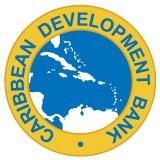
TORONTO, Canada — Stakeholders from the private and public sectors in Jamaica now have a better understanding of how sea water air conditioning (SWAC) technology can help reduce electricity costs. At the end of 2016, the Caribbean Development Bank (CDB) collaborated with New Leaf Power to host a study tour of Canada.
During the trip, the group of 12 observed and learned about the operations of two alternative energy and eco-friendly air conditioning systems: the Toronto Deep Lake Water Cooling District and Emera Inc.’s cooling system in Halifax, Nova Scotia.
Stakeholders from public sector organisations, including environmental agencies, collected information about the potential and challenges of the technology. Participants from private sector companies learned more about the system’s reliability of supply and the financial advantage of having a centralized district cooling network.
In the Caribbean, air conditioning accounts, on average, for 50 percent of the total energy consumption in commercial buildings, including hotels, offices and commercial shopping enterprises. SWAC is estimated to reduce electricity consumption for air conditioning by up to 90 percent.
Robert Wright, managing director of Jamaica-based New Leaf Power, noted that the study tour was another important step towards introducing this technology in the Caribbean.
“New Leaf Power, in cooperation with other partners, wishes to introduce this technology to Jamaica and I believe that by exposing stakeholders to operational SWAC systems here in Canada, trust in the maturity of the technology has increased. This exercise will also help us to better understand the energy saving potential and risks during the development and implementation of SWAC in the region,” said Wright.
In the Caribbean, a SWAC system might draw cold seawater from a depth lower than 800 metres to a cooling station. This chilled water is then used to absorb heat from buildings and then returned to the ocean, usually at a shallower depth. Several buildings can be connected to the chilled fresh water loop, a process that replaces conventional air conditioning.
Two CDB staff members also participated in the study tour and appreciated the opportunity to discuss with operators and developers some of the challenges in the development of such systems.
”The study tour gave us a better understanding of the construction risk to the marine environment and the means for assessment and mitigation,” said Hopeton Peterson, environmental specialist, CDB.
Peter Werner, EE/RE specialist at CDB added: “Although the principle of SWAC seems simple, a very detailed design process and commercial assessment are needed before such a system can be realized. At CDB, we expect to see more work being undertaken to assess the technical and financial feasibility for specific applications, where the conditions are right. Where feasible, this technology could contribute to the wider energy security objective to which CDB is committed.”
The study tour was financed by CDB from the Canadian Support to the Energy Sector in the Caribbean Fund and the Canadian High Commission in Kingston and the Jamaica Promotions Corporation offices in Kingston and Toronto provided logistical support. The visit will be followed by a regional workshop on SWAC during the first quarter of 2017.


